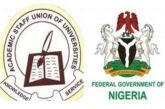
Federal Government has distributed over 1,000 Interactive Smart Boards, with accompanying teacher training, under the Digitalisation of Public Schools Initiative, a partnership between Universal Basic Education Commission and State Universal Basic Education Boards.
During the initiative’s launch at Queens College, Yaba, Education Minister, Dr Tunji Alausa, said the initiative is to ensure that every child access quality and technology-compliant education.
“Education must evolve with the world of work, innovation, and national competitiveness. That is why we are embedding AI, EdTech, and digital literacy in curricula to ensure our youths are equipped with skills in STEMM, data, and coding for the future.
“The shift from chalkboards to smart boards signifies a transition from traditional, one-directional learning methods to dynamic, interactive, technology-enabled active learning. This allows for interactive classrooms where pupils learn by engaging, exploring, and creating.
“These smart boards will enable teachers to integrate multimedia, digital textbooks, and real-time interaction into their lessons. Learners will engage through touch, exploration, and participation, not just listening,” he said.
Alausa thanked the government for its leadership in educational digital innovation, while praising UBEC and SUBEB for championing the initiative.
UBEC’s Executive Secretary, Mrs Aisha Garba, underscored the imperative of digital technology for effective teaching and learning.
“With digital tools like smart boards, tablets, and online content, we can ensure that learners in every part of Nigeria—from Lagos to Sokoto, and from Port Harcourt to Maiduguri—have access to quality learning opportunities that meet global standards,” she said.
She said the initiative was a demonstration of its commitment to bringing technology into the classroom, adding the boards will transform traditional education into dynamic, and participatory learning experiences.
“Teachers will now be able to integrate multimedia content, simulations, and real-time feedback during lessons. Students can engage more actively by touching, responding, and participating, making learning memorable. This approach turns education from a mere process of instruction into an experience of discovery.




